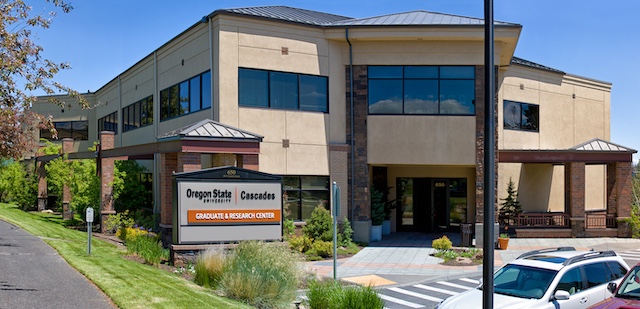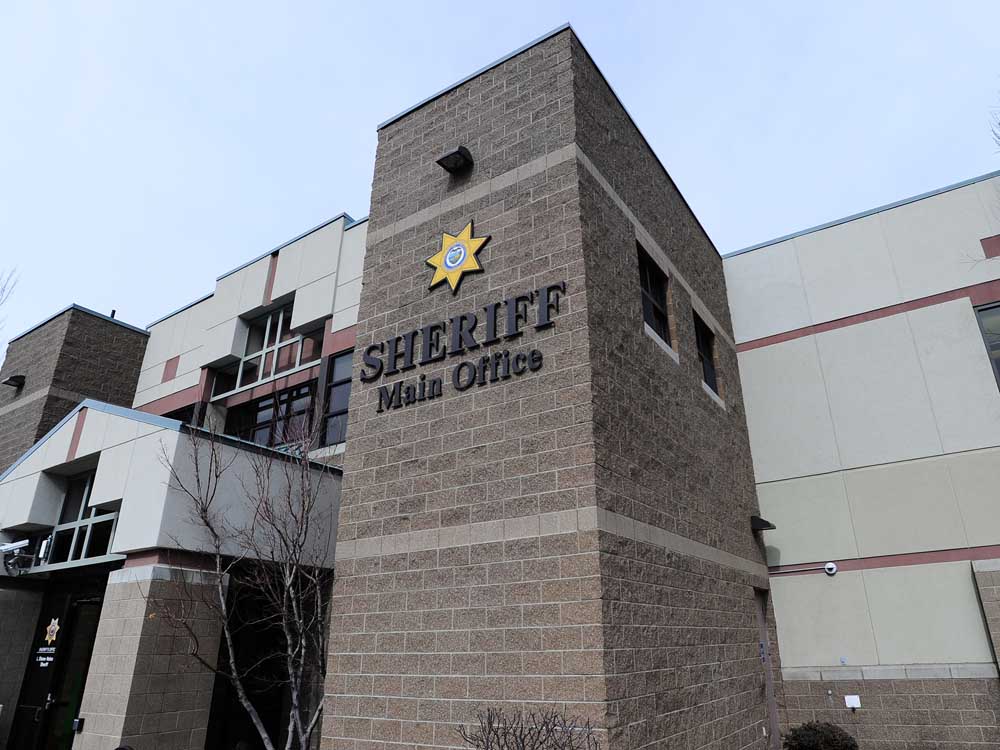What went wrong at military’s ‘Super Pond’?
Published 5:00 am Sunday, March 10, 2013
BALTIMORE _ Shaped like a teardrop and carved out of the eastern bank of the Bush River in Maryland, the UNDEX Test Facility at Aberdeen Proving Ground has earned the nickname ”Super Pond” for its unusual properties.
Viewed from above, the man-made pond looks much darker than the nearby waters of the Chesapeake Bay. That’s because it drops 150 feet to a flat bottom, where, out of view of the public, the military tests missiles, torpedoes, sonar and the effects of explosions on submarines and boats _ all within walls that can withstand the equivalent of 4,100 pounds of TNT.
Trending
It’s also where Navy divers practice salvage missions. When the military isn’t blowing things up in the Super Pond, it offers a controlled and easy-to-monitor environment, away from the unpredictability of nature’s choppy waves and ever-shifting conditions.
”Until recently,” said Maj. Gen. Genaro J. Dellarocco, chief of the Army Test and Evaluation Command, ”it was one of the safest facilities we had on the installation.
”We’re investigating with the Navy to find out what changed.”
On Feb. 26, rescue workers pulled two members of the Navy’s elite Mobile Diving and Salvage Unit 2 from the Super Pond.
Diver First Class James Reyher, 28, and Diver Second Class Ryan Harris, 23 _ whose unit has been involved in high-profile missions such as the recovery of the space shuttle Challenger _ had been participating in a training exercise at the facility. They were reportedly using air hoses supplied from the surface, and were tethered together.
One was dead at the scene; the other was pronounced dead at a nearby hospital. They were the second and third divers to die at the Super Pond in less than a month.
Trending
George H. Lazzaro Jr., a 41-year-old former Marine working as a civilian engineering technician in the Firepower Directorate of the Aberdeen Test Center, died Jan. 30 while performing routine maintenance in the facility.
Until Lazzaro’s death, Army officials said, not one injury had ever been reported at the Super Pond, which was built in 1995.
Now the Army Test and Evaluation Command has closed the facility indefinitely, pending the findings of several investigations. Lazzaro’s death is being probed by the Army Criminal Investigation Command, Army Combat and Readiness/Safety Center and the Occupational Safety and Health Administration. The Naval Criminal Investigative Service is looking into the deaths of Reyher and Harris.
While officials have said little about either incident, they have stressed that they are not related.
A spokeswoman for the Army Test and Evaluation Command said the Navy was briefed on Lazzaro’s death before the training exercise last week. Spokeswoman Robin Boggs said naval instructors performed risk assessments and followed safety measures outlined in the U.S. Navy Diving Manual.
Aberdeen Proving Ground, the Army’s oldest active test installation, has grown from its World War I-era beginnings into one of the military’s most advanced research centers, with a mostly civilian workforce of 21,000 studying, developing and engineering weapons, armor, communications and electronics.
In 1990, as public concern was growing over the impact of naval shock and vibration testing on sea life in the Chesapeake and off Key West, the military chose the base for an isolated new Underwater Explosive (UNDEX) Test Facility.
”It’s a controlled environment,” Dellarocco said. ”We can actually explode things underwater and keep it confined to it.”
At 1,070 feet long and 920 feet wide, the Super Pond can accommodate both boats and submarines. Equipment can also be dropped to the bottom. The facility is cleaned periodically, Dellarocco said.
From Day One, he said, it has been used for dive training. As such, it is familiar to members of Mobile Diving and Salvage Unit 2.
Based at Joint Expeditionary Base Little Creek-Fort Story in Virginia Beach, the unit performs the dangerous jobs of searching for underwater explosives, underwater repair, salvage and demolition. Formed in 1966, it’s one of two such units in the Navy.
”We dive the world over,” Navy divers boast in their motto, with some justification. Members of MDSU2 cleared the waterways of Southeast Asia during the Vietnam War, worked on the recovery of the space shuttles Challenger and Columbia, TWA Flight 800 and the Civil War ironclad Monitor, and the disaster responses to Hurricane Katrina in 2005, the 2007 Minneapolis bridge collapse and the 2010 Haiti earthquake.
Beginning last month, one company of the unit worked for more than two weeks to recover the wreckage of an Air Force F-16 that crashed off the coast of Italy. The divers are often dispatched to recover downed helicopters, which can carry sensitive equipment or weapons systems that the military wants recovered or destroyed.
To become a Navy diver, sailors must complete a grueling eight-month course, the first few months of which are devoted to weeding out candidates.
Justin Bradshaw, a former Army engineer-diver who searched for mines and explosives in Eastern Europe, said Army and Navy divers train together at the Navy Diving and Salvage Training Center in Panama City, Fla. They undergo intensive physical training with exercises that including running while holding boats over their heads, and heavy classroom work in dive physics, physiology and instruction in treating diving injuries and operating decompression chambers.
After they are certified, divers must pass fitness tests twice a year.
Harris, of Gladstone, Mo., completed the course in 2008 and joined MDSU2 in 2011. Reyher, of Caldwell, Ohio, finished the course in 2009 and joined the unit last year.
”He totally enjoyed it and had a great relationship with the people on his dive team,” said his stepmother, Gale Reyher. ”They were real close, like brothers.”
Cmdr. Michael Runkle, the commander of MDSU-2, said Reyher and Harris ”epitomized the unsung hero persona of the Navy diver.”
”We are fortunate to have had the opportunity to serve with them. We are all deeply saddened by their loss.”
Navy Lt. Nathan Potter said MDSU2 had been using the Super Pond for pre-deployment certification for at least three years.
Former Navy diver Chip Chase, who commanded a reserve detachment of MDSU2, said the facility offers salvage teams a place to recreate ”real world” recovery scenarios in a ”controlled environment” where ”they can place specific things on the bottom.”
He said commanding officers are required to perform a thorough ”operation risk management” assessment before proceeding. ”You look at environment, you look at the personnel, you look at everything to determine the risk of training.”
While he didn’t know what went wrong last week, Chase said his knowledge of procedures ”leads me to believe there was something there in the Super Pond that caused this to occur, something that was not immediately noticeable, or else they wouldn’t have put those guys in that environment and training exercise.
”It’s deep, it’s dark, it’s cold. I’m sure there’s all kinds of stuff on the bottom that someone can get entangled with. It’s hard to predict what could have been down there that could have caused the accident with these guys.”
Mark V. Lonsdale, author of ”United States Navy Diver: Performance Under Pressure,” said the deaths are baffling.
Surface-supplied diving is considered one of the safest forms because divers have unlimited air from hoses attached from their helmets to the surface, can stay in constant communication with command and may be pulled up in an instant.
”To go into cardiac arrest?” Lonsdale asked. ”These guys are fit Navy divers.”
Chase said the investigation of last week’s deaths is likely to focus on the divers’ training and health.
Before a training exercise, Potter said, Navy divers typically have medical personnel on standby, complete an emergency action plan, identify the nearest decompression chamber and hospital, and check water and weather conditions.
Among the dangers confronting divers are arterial gas embolisms, which are bubbles that can get caught in the bloodstream and can cause heart attack or stroke, and decompression sickness, also known as the ”bends,” in which nitrogen bubbles can build in tissue, leading to paralysis or death.
To avoid the bends, an individual surfacing from a substantial depth may perform a ”decompression dive:” rising 10 feet, stopping for a period of time, rising another 10 feet, stopping again, all the way to the surface.
Ways to speed the process, particularly in dangerous choppy or frigid conditions, include bypassing the steps and immediately hopping into a decompression chamber, or pumping a mixture of helium and oxygen into a diver’s helmet.
In the latter example, the pumps themselves may pose a danger: A faulty engine may contaminate the air supply with fumes.
”When we jam the surface supplied tanks _ that means fill _ we have to make sure the filtered hose is away from the exhaust of the compressors or it can suck it in and then that’s like breathing carbon monoxide,” Bradshaw said. ”Similar to what comes out of a car.”
The Army is helping NCIS with its investigation. Until then, no one, civilian or military, is allowed near the Super Pond.
U.S. Rep. C.A. Dutch Ruppersberger said he would be watching closely.
”I’m just looking forward to seeing what the final investigation reveals,” said the Baltimore County Democrat, whose district includes Aberdeen Proving Ground. ”When you have two people _ two Americans _ die who protect our country, we have to find out what occurred and why it occurred.”








